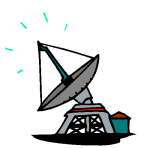
Measuring Weather
 Weather can be described using terms such as wet or fine, warm or cold, windy or calm, so why is there a need to measure the weather? For most people, a description of the weather is adequate but for many businesses more detailed and accurate measurements are required. The science of studying weather is called meteorology. Weather scientists or meteorologists measure temperature, rainfall, air pressure, humidity (the amount of moisture in the air), sunshine and cloudiness, and they make predictions and forecasts about what the weather will do in the future. This is important for giving people advance notice of severe weather such as floods and hurricanes.
Weather can be described using terms such as wet or fine, warm or cold, windy or calm, so why is there a need to measure the weather? For most people, a description of the weather is adequate but for many businesses more detailed and accurate measurements are required. The science of studying weather is called meteorology. Weather scientists or meteorologists measure temperature, rainfall, air pressure, humidity (the amount of moisture in the air), sunshine and cloudiness, and they make predictions and forecasts about what the weather will do in the future. This is important for giving people advance notice of severe weather such as floods and hurricanes.
Temperature for example, is measured with a thermometer, usually containing mercury. Temperature is the hotness or coldness of an object. Temperature is usually measured in degrees Celsius (°C), although sometimes the Fahrenheit scale may be used as well. Rainfall is usually measured by collecting what falls in rain gauges. Rainfall is expressed as a depth of water that has fallen, in millimetres or inches. Wind can be simply observed with a weather vain. To measure its speed, more technical equipment is needed. Alternatively, the Beaufort scale can be used to make a judgment of the strength of the wind by observing how it affects objects outdoors like trees.
Websites
Other topics Technical Page
Technical Page
• Wild Weather Page
• Wild Weather Page
• Met. Office
• Met. Office
• Weather Instruments
• Introduction to Weather
• Clouds
• Dew
• Energy
• Fog
• Forecasting
• Hurricanes
• Measuring Weather
• Thunderstorms
• Tornadoes
• Water Cycle
 Print Topic
Print Topic